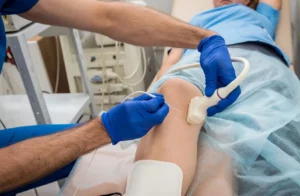
Struggling to keep up with post-market surveillance requirements for your medical devices? Do you worry about the potential risks and liabilities that come with failing to properly monitor your products once they hit the market? Critical post-market surveillance (PMS) report examples under the EU’s Medical Device Regulation (MDR) include the Periodic Safety Update Report (PSUR) and Post-Market Surveillance Report (PMSR), which outline device-related incidents and corrective actions taken.
Failure to comply with regulatory guidelines like MDR standards can harm a product’s reputation or result in delayed commercialization. We understand the pain and stress that comes with the MDR system, post-market surveillance, and reporting. This blog will guide you through the process. We explore the challenges you face with regards to post-market surveillance and reporting, provide tips on how to navigate them, and answer some MDR frequently asked questions.
Understanding the Periodic Safety Update Report (PSUR)
What is the Periodic Safety Update Report for medical devices? The Periodic Safety Update Report (PSUR) on a medical device is a comprehensive report that collects and evaluates information on the worldwide safety experience of devices in the market. Let’s explore how to create a PSUR that meets EU MDR requirements. The PSUR is a critical tool for establishing the risk-benefit balance of the product and identifying potential safety issues.
To create periodic safety update reports that meet EU MDR requirements, you must follow specific guidance on periodic safety update report requirements laid out in the MDR. First, a PSUR must include detailed information about the medical device, such as its name, description, intended use, and usage frequency. It should also provide an overview of the product’s safety profile, including adverse reactions, patient exposure, and any changes in the product’s characteristics that may affect its safety.
In addition, the PSUR must outline the benefit-risk determination of the medical device and any actions taken to manage risks. This includes an evaluation of emerging safety concerns and the effectiveness of risk mitigation measures like preventive and corrective actions. The PSUR must also include a summary of the product’s PMS data and activities, such as systematic literature searches, clinical studies, and adverse event monitoring.
Once the PSUR is complete, you must submit it to the competent authority, as with all technical documentation, usually your notified body, in the EU to ensure compliance with PSUR medical device guidance. Competent authorities will review the report and provide feedback or request additional information if necessary. Failure to comply with the EU MDR PSUR requirements could result in penalties, such as product recall or suspension of marketing authorization.
How to Create a Compliant Post-Market Surveillance Report (PMSR)
What is the difference between PMSR and PSUR? Post-Market Surveillance Reports (PMSR) are essential for monitoring the performance of devices after they have been approved for sale. What are the key components of a compliant PMSR? And can you effectively implement the process into your organization’s quality management system?
Let’s discuss how to create a compliant PMSR. Having an effective PMSR system in place can enable manufacturers to track any device-related incidents and implement the necessary corrective actions. Compliance with the MDR regulations requires the implementation of a proactive surveillance system that includes timely reporting and analysis of adverse events, regular risk assessments, and trend analysis.
A compliant PMSR starts with the collection and analysis of PMS data for your device. This data includes feedback from patients, healthcare professionals, and other stakeholders, which can be used to identify potential safety concerns and product issues. This data is then analyzed and documented in a PSUR, which provides a comprehensive overview of the medical device’s safety and efficacy.
To implement PMS effectively in your organization, you need to have a clear understanding of the PMSR requirements for your medical device. This includes identifying any specific obligations and timelines for reporting adverse events, complaint data, and other safety-related information. You must also have a robust and structured PMSR plan in place that outlines your PMS data collection and analysis procedures and reporting timelines.
To ensure compliance with PMSR, it is also essential to have a dedicated team responsible for the collection, analysis, and reporting of post-market surveillance data. This team should be well-trained and have the necessary skills to ensure that the data collection and reporting process is efficient and accurate.
PSUR and PMSR Requirements for Different Classes of Medical Devices
It’s important to understand the different requirements for PMSR and PSUR based on the classification of your devices. Under the MDR, different categories of medical devices have varying levels of scrutiny and reporting obligations, with high-risk devices shouldering the highest burden in the required technical documentation. Establishing a compliant reporting system can be complicated and expensive, creating barriers for compliance, such as regulatory requirements, budget constraints, and resource shortages.
How often is a PSUR submitted? For low-risk devices, classified as Class I, manufacturers are only required to maintain a post-market surveillance plan, specifically called a Post-Market Clinical Follow-up (PMCF) plan under the MDR, which involves actively monitoring the performance of the device once it’s on the market. Manufacturers of Class IIb and Class III devices, on the other hand, are subject to much more stringent reporting requirements. In addition to PMCF, Class IIb manufacturers must establish a PMSR system and submit Periodic Safety Update Reports (PSURs) every 24 months. Class III manufacturers must submit PSURs every 12 months in addition to their PMCF and PMSR obligations. Implantable devices are an example of Class III devices.
| Type | Classification | PMSR or PSUR | Frequency |
| Medical Device | Class I | PMSR | As Needed |
| Class IIa | PSUR | Every 2 Years(At Minimum) | |
| Class IIb (non-implantable) | PSUR | Every Year(At Minimum) | |
| Class IIb (implantable) | PSUR | Every Year(At Minimum) | |
| Class III (all) | PSUR | Every Year (At Minimum) | |
| IVD | Class A, B | PMSR | As Needed |
| Class C | PSUR | Every Year(At Minimum) | |
| Class D | PSUR | Every Year(At Minimum) |
To comply with these requirements, medical device manufacturers should establish a comprehensive PMSR plan that includes regular monitoring and analysis of device performance data, post-market clinical studies, and risk management strategies. Manufacturers must also maintain accurate and up-to-date records of adverse events and other safety-related incidents associated with their products, and regularly update their PSURs based on this information.
Overall, compliance with PMSR and PSUR requirements under the MDR is an essential component of ensuring the safety and effectiveness of medical devices on the market. These documents are subject to notified body, or competent authority, review. By understanding and complying with these regulations, manufacturers can demonstrate their commitment to patient safety and protect their business from potential liability issues.
Let Sterling Guide You.Non-compliance can result in significant financial and legal penalties for medical device manufacturers. Additionally, non-compliance can harm your company’s reputation and result in a loss of consumer confidence, ultimately impacting your bottom line. Fortunately, there are ways to overcome these challenges. One solution is to find a reputable partner who can handle the necessary reporting and analysis on your behalf. Sterling has experience working with a wide variety of devices and can ensure compliance with the cumbersome MDR regulatory reporting requirements. Sterling’s regulatory team offers services to help you identify and address all CE Mark requirements for your device. Let Sterling guide the way, free up internal resources, and reduce the risk of non-compliance. Please contact us today.




